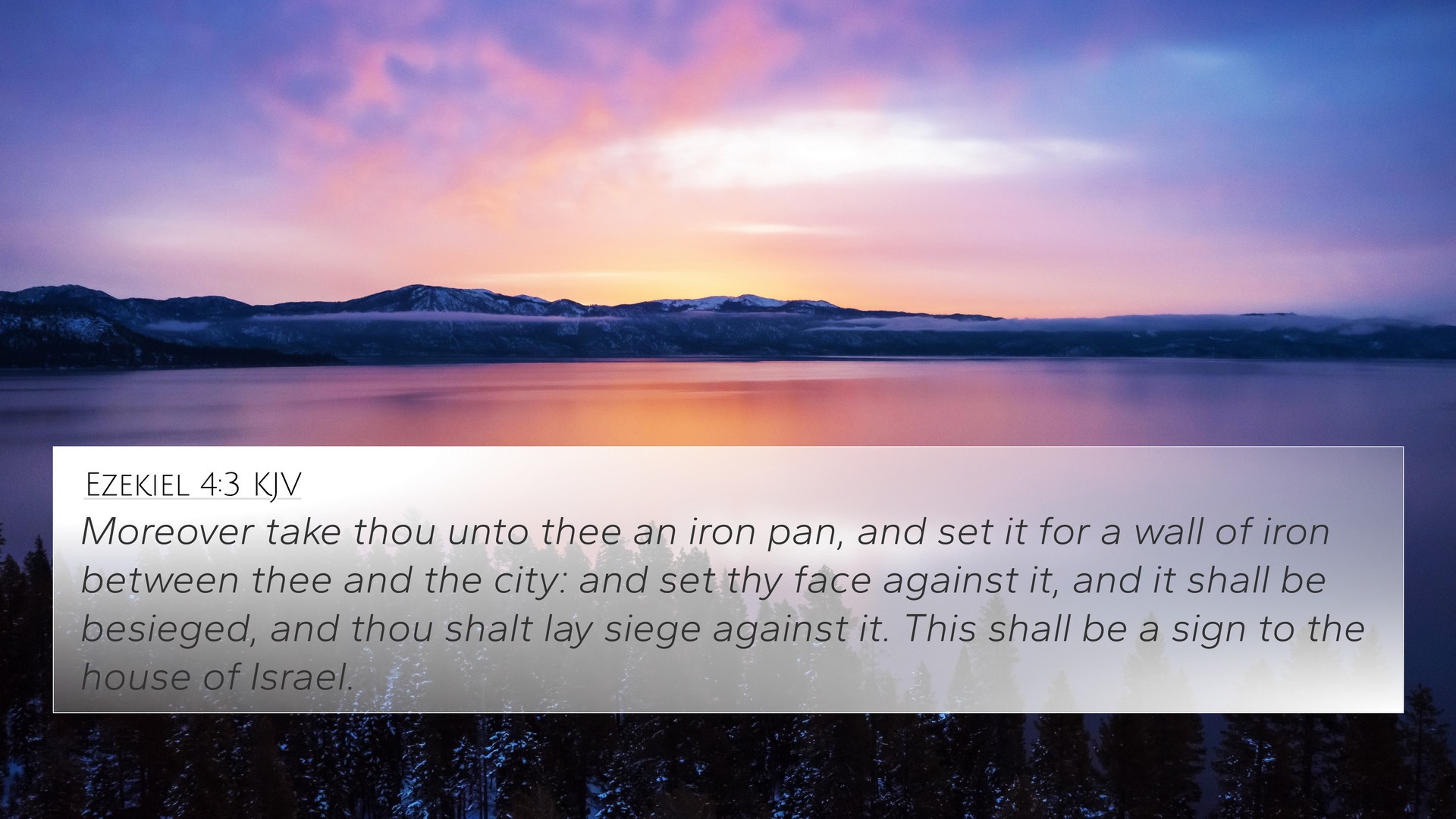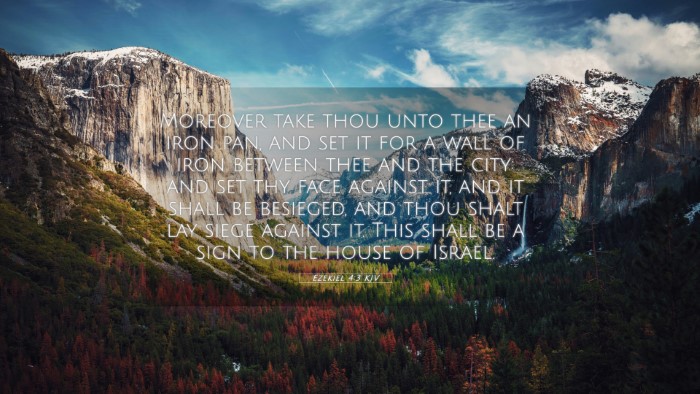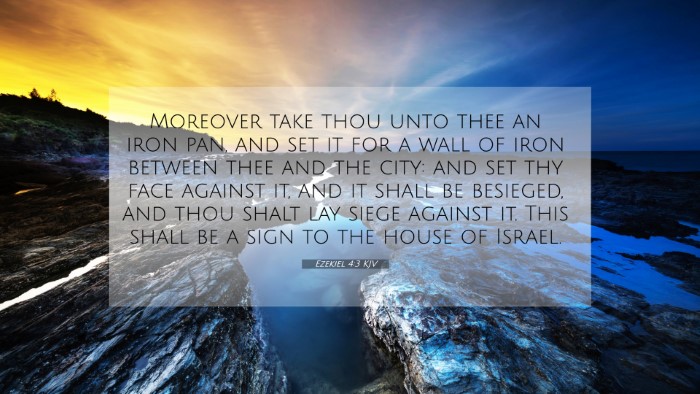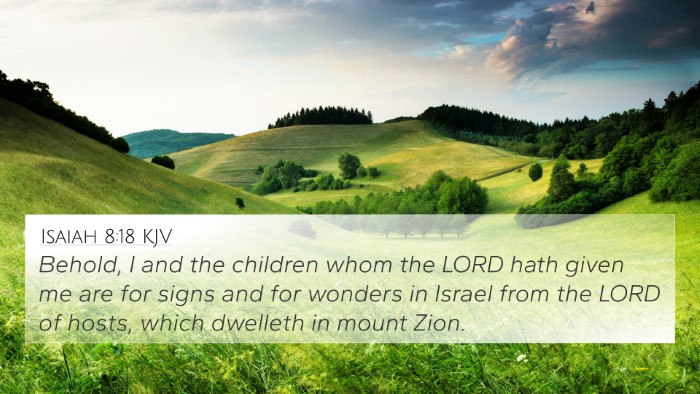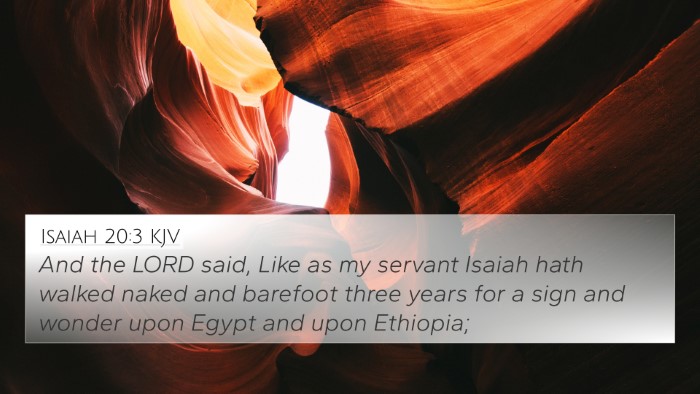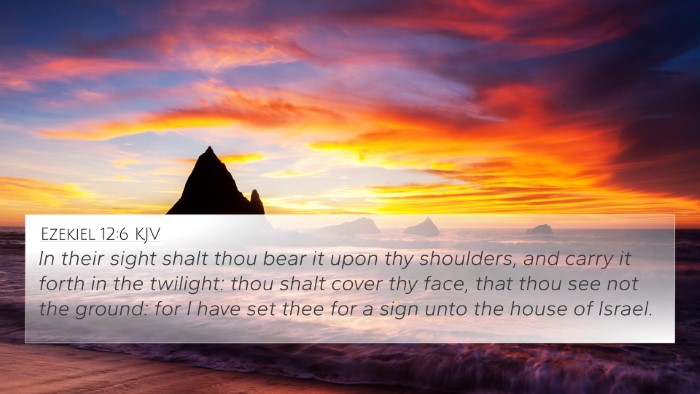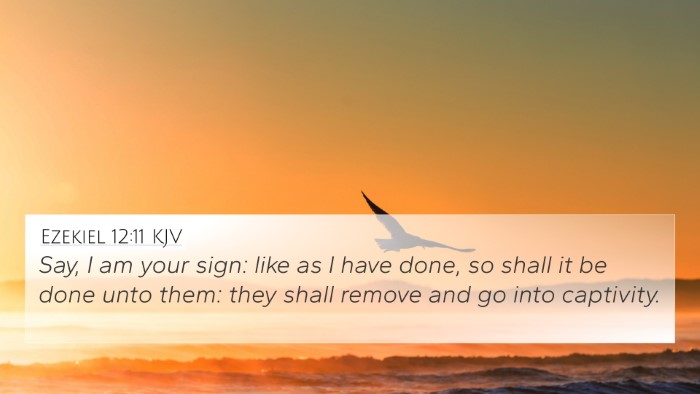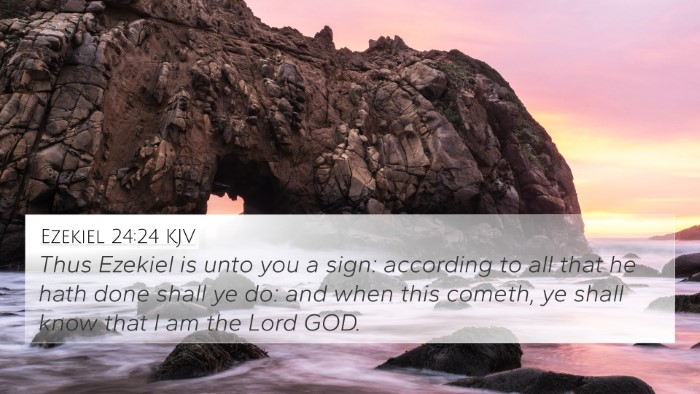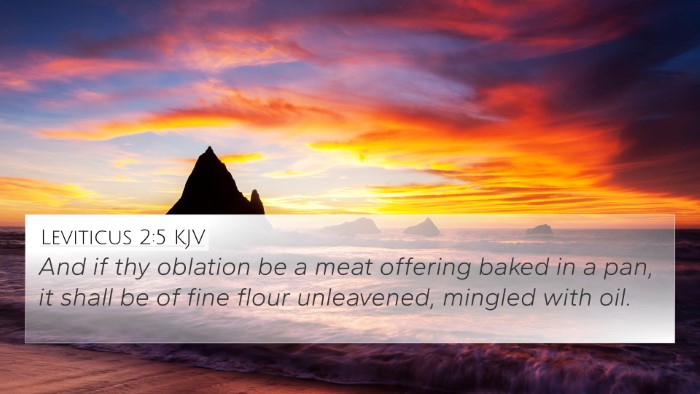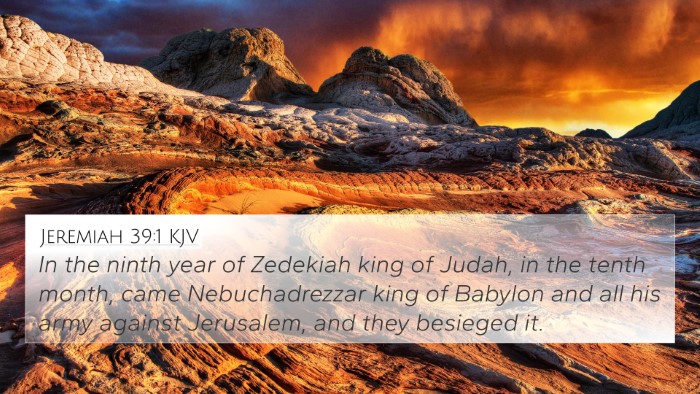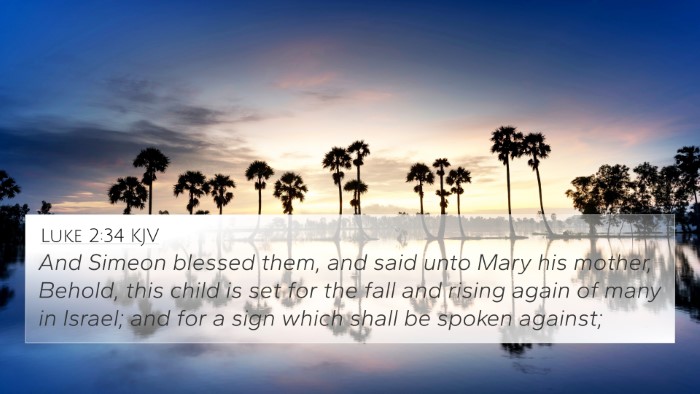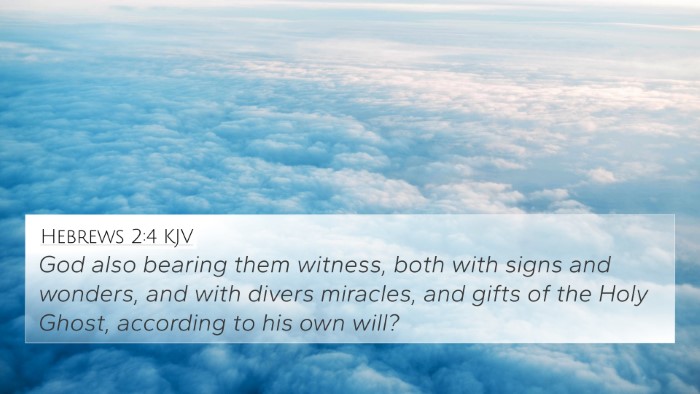Ezekiel 4:3 - Meaning and Interpretation
Ezekiel 4:3 states: "Moreover take thou unto thee an iron pan, and set it for a wall of iron between thee and the city: and set thy face against it, and it shall be besieged, and thou shalt lay siege against it. This shall be a sign to the house of Israel."
This verse is part of Ezekiel's symbolic actions and prophetic messages to the Israelites, illustrating the seriousness of their impending judgment and the need for repentance.
Summarized Meaning
Ezekiel is commanded to use an iron pan as a metaphorical barrier between himself and the city, representing God's firm stance against Jerusalem due to its sins. The wall signifies a separation caused by Israel's disobedience, where the iron represents strength and unyielding judgment. As a prophet, Ezekiel's actions are not only for concurrent understanding but for future generations to recognize God’s workings amidst their disobedience.
Commentary Insights
-
Matthew Henry:
Henry interprets this verse as a powerful reminder of God's impending judgment against Jerusalem. The iron pan symbolizes God's unmovable decree against the city, emphasizing how their sin has constructed a barrier to His mercy.
-
Albert Barnes:
Barnes elaborates that the imagery presented by Ezekiel makes it clear that the siege is a definite sign of God’s punishment. The use of an iron pan as a wall underscores the firmness of God's decision, indicating that His will cannot be contested.
-
Adam Clarke:
Clarke emphasizes the need for the people to witness and contemplate the dramatic representations of their situation. This act serves as a warning and a tangible evidence of God's disapproval and the consequences of sin.
Cross-References and Related Scriptures
This verse connects to several other passages throughout the Bible, enriching our understanding and providing thematic links between various scripture. Below are notable cross-references:
- Jeremiah 52:4-5 - Depicts the siege of Jerusalem, providing historical context to Ezekiel's prophecy.
- Isaiah 29:3 - Illustrates how God opposes His people for their unrighteousness, reinforcing the theme of external siege correlating to internal decay.
- Lamentations 2:4 - Reflects the anguish faced by the city during its siege, parallel to Ezekiel's foretelling.
- Romans 1:18-32 - Shows God's wrath revealed against ungodliness, similar to the situation facing Jerusalem.
- Ezekiel 4:6 - Continues the symbolic actions of Ezekiel, building on the explanation of God's discipline.
- Matthew 24:2 - Jesus' prophecy about the desolation of the temple, linking New Testament events with the judgments described in Ezekiel.
- 2 Peter 2:9 - Illustrates God's ability and decision to reserve judgment for the ungodly, resonating with the theme of divine accountability.
Importance of Cross-Referencing in Bible Study
Engaging in Bible verse cross-references enhances the understanding of scriptural texts and their interconnections. Tools like a Bible concordance or a Bible cross-reference guide can aid in identifying these connections. By exploring thematic Bible verse connections, one can observe recurring motifs across both Old and New Testaments, enriching personal study and spiritual growth.
Conclusion
Ezekiel 4:3 serves as a profound reminder of God's judgment and the consequences of sin, encapsulating themes of warning, discipline, and prophetic action. By engaging with this scripture and cross-referencing it throughout the Bible, believers are encouraged to reflect on their relationship with God, fostering a deeper understanding of His character and expectations. Employing a comprehensive Bible cross-reference system enables readers to uncover the layers of meaning interlacing biblical texts, guiding their journey in faith.
